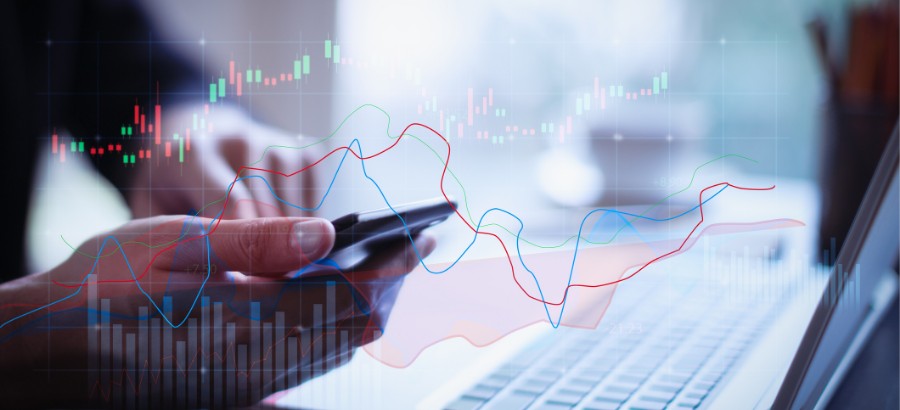The general ledger has been around since the days when the abacus was a trailblazer. But while computers have mostly phased out beads, the general ledger still spearheads modern-day accounting. The general ledger (GL) is the recordkeeping system used to sort, store, and summarize a company’s financial transactions over time. It forms the backbone of any accounting system. As such, the GL is the primary financial reporting structure. While basic aspects have not changed since Luca Pacioli invented it in 1494, the world and technology have introduced new and additional practices for managing a GL. Because it is so important, the way a GL is designed, used, and secured needs to be understood in a modern manufacturing business.
The elements of an accounting system
When an accounting transaction occurs, it is first recorded in the accounting system in a journal applying the same double-entry system that Luca Pacioli described more than 500 years ago. This journal updates the general ledger. The general ledger is structured based on an index known as the chart of accounts.
The GL is used for several purposes:
- It provides financial accounting records for an organization’s business transactions and account balances. It is the main system of record for all historical financial entries. These records can help to identify unusual, erroneous, or fraudulent transactions.
- It enables a business to compile a trial balance where all debits and credits are totaled. Most organizations do this periodically, so they can manage revenue and expenses, either against budget or prior period figures.
- It forms the basis of most financial reporting with different formats applied for different stakeholders. As much as businesses today wish they have a crystal ball to predict when the next pandemic will hit them or how their supply chain will be affected by global geopolitical events, many business decisions are still based on historical financial data, from the GL.
3 reasons why manufacturers should use an integrated ERP accounting system
- For most manufacturers, the information typically recorded in an accounting system is never sufficient to actually manage and run the business and support decision-making and planning. An ERP system integrates finance and accounting information with other business systems, such as inventory, production, and order management. The GL in an ERP system not only has greater visibility over revenue and costs, but it can also report information in real-time, something a separate accounting system cannot do.
- Furthermore, in an accounting system that sits on its own, it is difficult to do proper cash management. If other operations like sales and procurement (which have a direct impact on cash flow) run in separate systems, the accounting system will not have a complete view of the business, which makes full cash management difficult.
- With inventory making up more than 20 percent of a manufacturer’s cost, inventory information in the GL is important. In a separate accounting system, inventory reporting is usually done periodically — at month-end, with opening and closing stock and journal entries that are processed to generate the stock balance in the GL. However, with a GL in an ERP system, inventory can be reported continuously, at any time of the month, providing an instant view of inventory in any warehouse, and the movement of stock.
How should a general ledger be designed?
The CFO is ultimately responsible for the GL, but since it is part of an integrated system, all stakeholders who will rely on the information that comes out of the GL should have a say in its design. While the CFO may want to ensure that the GL can support audited financial statements for the company, others like a production manager may, for example, be more interested to know what overheads have been incurred in a specific production area or plant.
A practical way to approach GL design is to consider what the management report must show at the end of the month. This means understanding the organizational structure of the business and involving business unit or cost center managers to understand how they measure financial performance. If you understand the reporting requirements of your stakeholders, this can easily be mapped back to a chart of accounts that support this requirement.
Ensuring general ledger integrity and security
The accuracy and integrity of all account balances in the GL are critical and a company must ensure its accounting practices adhere to a consistent set of principles, such as GAAP or IFRS.
One of the best practices to ensure integrity, even though it is old school, is the segregation of duties, for example, between the ability to raise a GL journal and approving the journal.
In an integrated ERP accounting system full traceability between financial reports and transactional entries may be enabled. When a transaction is processed in a sub-ledger, it is automatically allocated a sequential journal number. This number is followed through into the GL, allowing for a drill down from the GL to source transactions.
Artificial Intelligence is also starting to play a bigger role in the detection of fraud and anomalies in financial data, for example by identifying postings late at night or back-dated expense account adjustments.
How the geenral ledger is being used
As much as the General Ledger today still relies on the same basic principles as 500 years ago, technological advancement as well as regulatory change, has changed how the GL is being used today.
- Real-time information in the GL is critical to evaluate and predict business performance because conditions can change so quickly. Relying only on a month-end report from a separate accounting system can lead to poor decisions.
- Changes around disclosure requirements for Environmental, Social, and Governance (ESG) are likely to have an impact on GL structure and reporting. The role of the GL could expand to include not just financial information but also non-financial information.
- Technology advances have significantly increased the volume of data in many areas of business, including the GL. To get value-driven and error-free GL reporting, finance teams should consider the technological advances in automation and artificial intelligence. As an example, AI and RPA can be combined to read incoming journal instructions in various formats, validate the content based on complex self-learned rules and predict the department and ledger code to which a journal needs to be posted.
Companies that could consolidate information in real-time from other business units into their GL to manage cash and support fluid decision-making came through the pandemic in a good position. A GL which has a unified view across the whole business has significant benefits in terms of profitability and efficiency.







